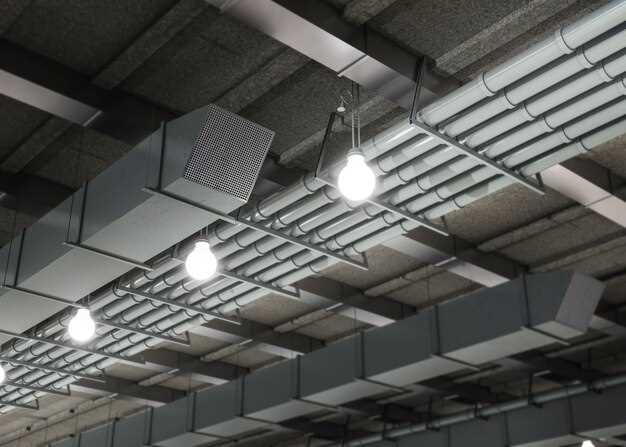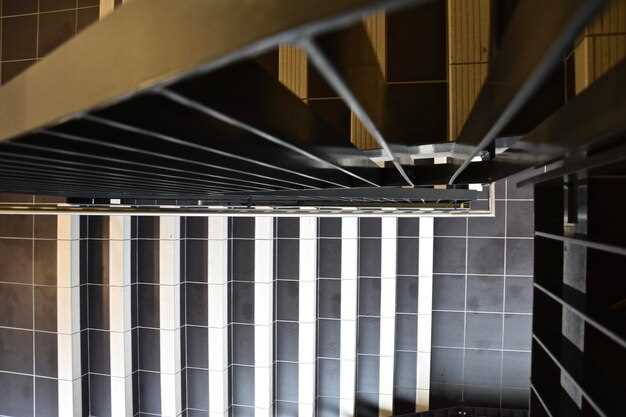
In a welding workshop, ensuring safety is of paramount importance. One of the critical aspects that contribute to a safe working environment is effective ventilation. Welding processes often release harmful fumes, gases, and particulate matter that can pose serious health risks to workers. Therefore, implementing appropriate ventilation solutions is essential for maintaining a safe workshop atmosphere.
Proper ventilation not only helps in reducing the concentration of hazardous substances in the air but also supports the overall well-being and productivity of welders. By understanding the various types of ventilation systems available and selecting the right one for your workshop, you can significantly enhance safety measures. Different methods, from natural ventilation to advanced mechanical systems, can be utilized based on the specific needs of the workshop.
Additionally, it’s important to consider factors such as airflow patterns, the layout of the workshop, and the types of welding processes employed. By addressing these elements, workshop managers can create a comprehensive safety strategy that minimizes risks while ensuring compliance with health regulations. This article will explore various ventilation solutions tailored for welding workshops, emphasizing their crucial role in safeguarding workers’ health and increasing operational efficiency.
Designing Ventilation Systems to Minimize Fume Exposure in Welding

Effective ventilation is crucial in a welding workshop to safeguard workers from harmful fumes and gases produced during the welding process. Designing a robust ventilation system requires a thorough understanding of the specific needs of the workshop environment and the types of welding activities performed.
Firstly, assessing the workshop layout is essential. The placement of welding stations, equipment, and workpieces influences airflow patterns. A well-designed layout ensures that fume capture devices are positioned close to the weld source, minimizing the dispersion of airborne contaminants.
Secondly, it is important to select the appropriate type of ventilation system. Local exhaust ventilation (LEV) systems are highly effective for capturing fumes at the source. These systems should include hoods or arms that directly capture harmful pollutants as they are generated. Moreover, ensuring proper airflow rates is vital to effectively remove these contaminants from the breathing zone of the welders.
Additionally, incorporating general ventilation can complement localized exhaust systems. General ventilation helps to further dilute and disperse residual fumes, improving overall air quality. This system should include exhaust fans and intake vents strategically placed to maintain consistent air circulation throughout the workshop.
Regular maintenance of the ventilation system is necessary to ensure its efficiency. Filters and fans should be checked, cleaned, or replaced periodically to avoid blockages that could diminish airflow. Monitoring air quality through regular assessments ensures that the ventilation is functioning as intended and that fume levels remain within safe limits.
Finally, involving workers in the design process can provide valuable insights. Their feedback on airflow, comfort levels, and perceived fume exposure can help create a more effective and user-friendly ventilation system. Safety training programs should also emphasize the importance of ventilation in maintaining a safe working environment.
Choosing the Right Filters for Air Purification in Welding Environments
In welding workshops, ensuring a safe working environment is paramount, and proper ventilation plays a crucial role. One of the most effective ways to enhance ventilation systems is through the integration of high-quality air filters. Selecting the appropriate filters will significantly improve air purification and protect workers from harmful fumes and pollutants generated during the welding process.
Understand contaminant types: Different welding processes release various airborne contaminants, including metal fumes, gases, and particles. It is essential to identify these contaminants to choose the right filter media. For instance, welding of stainless steel produces toxic chromium and nickel fumes, while mild steel generates a range of ferrous particles. Considering the specific metals being worked with will guide the selection process.
Filter efficiency ratings: Filters are rated based on their efficiency in capturing particles of different sizes. Using filters with a high MERV (Minimum Efficiency Reporting Value) rating, typically between 13 to 16, can effectively trap smaller particulates, ensuring cleaner air circulation within the workshop. HEPA (High-Efficiency Particulate Air) filters are also recommended for their ability to capture up to 99.97% of particles 0.3 microns or larger.
Activated carbon filters: In addition to particulate filters, incorporating activated carbon filters is beneficial for treating gaseous pollutants. These filters are effective in reducing odors and harmful gases such as ozone and volatile organic compounds (VOCs) often released during welding. By combining particulate and activated carbon filters, ventilation systems become more comprehensive in managing air quality.
Regular maintenance: Selecting high-quality filters is not sufficient; regular maintenance and timely replacement are essential for optimal performance. Clogged or damaged filters can reduce airflow and compromise the effectiveness of the ventilation system, leading to increased exposure to hazardous welding fumes. Establishing a routine maintenance schedule will ensure that filters are in top condition and maximize air purification efforts.
In conclusion, choosing the right filters for air purification in welding environments is critical for maintaining a safe workshop. Understanding the types of contaminants, selecting high-efficiency filters, and implementing regular maintenance will create a healthier work environment and enhance overall worker safety.
Regular Maintenance Practices for Ensuring Optimal Workshop Air Quality

Maintaining optimal air quality in a welding workshop is crucial for the safety and health of workers. Regular maintenance practices focus on ensuring that the ventilation systems operate effectively, minimizing hazardous fumes and particulates. First and foremost, routine inspections of ventilation equipment should be scheduled to check for blockages and wear. This includes assessing ductwork for obstructions and ensuring that filters are replaced regularly to maximize airflow.
Another essential practice is cleaning the ventilation systems to prevent the accumulation of contaminants. Dust and debris can significantly reduce the efficiency of the system, making it vital to clear any buildup in ducts and exhaust fans. Establishing a cleaning schedule that aligns with usage patterns can help maintain effectiveness.
Additionally, testing and calibrating the ventilation systems can help identify any inefficiencies. This process involves measuring airflow rates and ensuring that the ventilation system is distributing air evenly throughout the workshop. Adjustments may be necessary to optimize performance and ensure that all areas are receiving proper ventilation.
Moreover, educating workers on the importance of reporting any issues with the ventilation system can contribute to a proactive maintenance approach. Staff should be trained to recognize signs of inadequate airflow or unusual odors, allowing for quick action to be taken before air quality becomes compromised.
Finally, keeping documentation of all maintenance activities and air quality assessments helps in tracking performance over time. This log can be instrumental in identifying trends and making informed decisions about when further upgrades or replacements may be necessary. By implementing these regular maintenance practices, welding workshops can ensure optimal air quality and enhance overall safety for all personnel.



